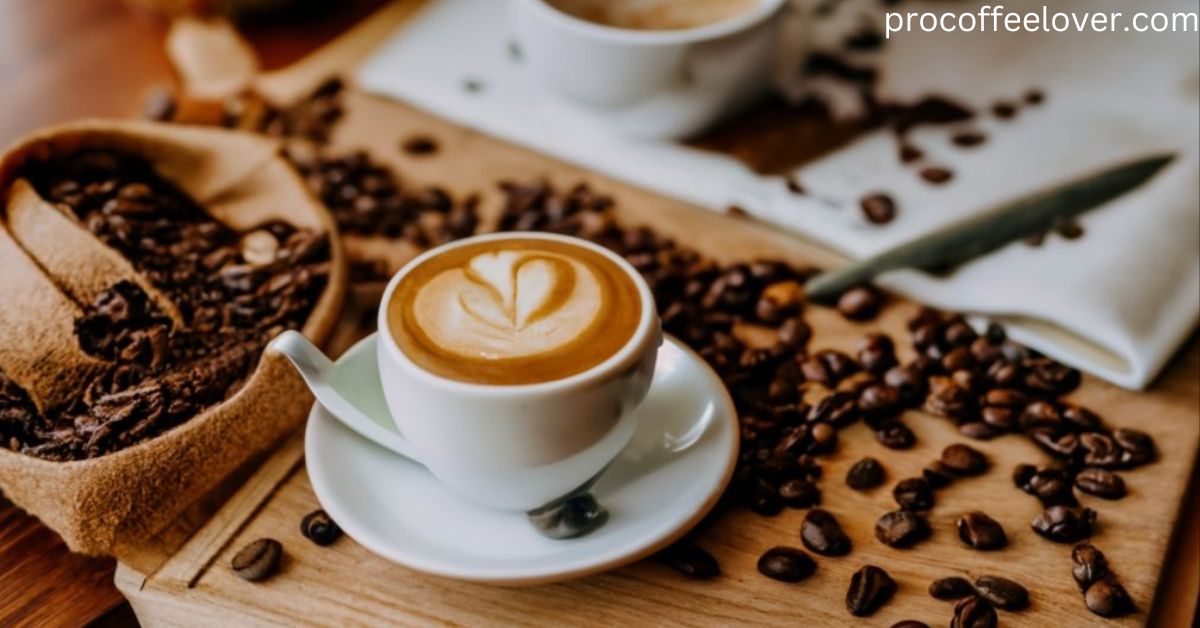Ler’s discuss Is coffee a homogeneous mixture?.Coffee is, without a doubt, one of the most consumed and popular beverages globally. The rich aroma of freshly brewed coffee wraps every one of us in its flavourful cocoa textures.
Be it bustling cafes like Starbucks or cozy kitchen corners, and coffee is a comforting presence in many people’s lives. Be it a morning run or your late midnight cravings. Who doesn’t enjoy a hot, steamy, chocolatey coffee?
But have you ever wondered about the composition of this beloved drink? Is coffee a homogenous mixture with evenly mixed ingredients, or is it a heterogeneous concoction of various ingredients? Let’s dive into the rich milky world of caffeine and its chemistry to unveil its components individually. Let’s find out if it truly lives up to its title of being a homogenous drink.
What Is A Homogenous Mixture?
Before dissecting the components of coffee, let’s first grasp what a homogeneous mixture is. Chemistry defines homogenous mixtures as uniformly distributed solutions where all the components’ molecules are evenly mixed. But, every part of the mixture would have an identical composition.
It’s an even mix with no phase separations that can settle over time. Hence, drinks with homogenous mixtures are popular because of their uniform consistency and stability.
Key Ingredients In Coffee: Water, Coffee Beans, And Additions

We must start from scratch to end this debate about coffee as a homogenous or a heterogeneous mix. Breaking it down to its primary components, it’s mainly composed of water and coffee beans.
Water, having excellent dilution properties, plays its role as a solvent, while coffee beans, full of flavor, cocoa and oils serve as the solute. However, this may seem like the only main ingredient for coffee, but the realm of coffee extends beyond your imagination.
Many Starbucks lovers prefer to customize their coffee with various additives like sugar, milk, syrups, cream and flavorings to get the best of both worlds: sweet and robust!With these extra toppings thrown into the mix, the equation of coffee’s homogeneity complicates further.
Coffee’s Consistent And Delicious Blend
The precision with which its ingredients come together in a rich and exquisite blend makes a delicious cup of joe delicious.
Coffee’s uniform composition promises a uniform experience as well. From the first sip to the last drop, you’ll experience a consistent fusion of cocoa and sweetness. This even distribution of ingredients makes it the perfect to-go drink that people prefer on their way to work.
Its rich and aromatic blend never disappoints drinkers. It’s free from any chunks and settled components. Moreover, it has uniform properties like density, color, and boiling point of coffee, which are the same throughout the mixture.
Mixing essential ingredients like sugar and milk won’t affect your coffee’s homogeneity. With even stirring, they would completely dissolve in the coffee, giving you a uniform blend of sweetness.
But throwing ice cubes into the mix would change the equation. Ice cubes won’t dissolve evenly in the coffee. This is because ice cubes are solid, made up of frozen water that won’t dissolve immediately because of the density difference, keeping them afloat.
Ice cubes don’t dissolve evenly in hot coffee because the differences in temperature, weight, and how hot and cold liquids move all play a role. As the ice melts, it cools down the coffee, which happens more when it touches the coffee.
This leads to areas of the coffee being colder and less diluted than others. The ice cubes won’t dissolve in the coffee, at least not immediately, making the mixture uneven. Also ,see more about do coffee liqueurs have caffeine.
How The Extraction Process Shapes Coffee’s Homogeneity?

Tracing The Roots Of Coffee Beans
The choice of coffee beans plays a pivotal role in determining whether our brew is harmonious or a symphony of distinct elements. Various roasted coffee bean types, such as the ever-
popular Arabica and the robust Robusta, each bring their unique personalities to the coffee party, greatly influencing the ultimate taste and aromatic experience.
Furthermore, it’s intriguing to note that the environmental conditions in which these beans grow and the exact moment of their harvest contribute to an orchestra of flavors that dance on our taste buds.
Caffeine content, another key player, varies naturally within different bean varieties, influenced by their lineage and the nurturing they receive in their growth. These disparities paint the canvas of coffee’s intricate flavor and overall chemistry.
Roasting and Brewing Magic
Roasting and brewing coffee beans is like a unique process where burning and brewing methods work their magic under the dance moves of chemical reactions, bringing out the unique essence of your daily cup of joe. As the beans roast, they undergo intriguing chemical changes that impact the coffee’s flavor.
Lighter roasts tend to have a zingy, vibrant acidity that awakens your taste buds, while darker roasts coax rich oils and waxes, resulting in a deep and velvety brew. It’s the magic in the method that makes each sip an adventure.
Coffee’s Physical Traits And Homogeneity
Coffee’s physical characteristics are an exciting aspect of its quest for homogeneity. Let’s further examine how it looks, feels, and behaves. After all, all factors play a pivotal role in determining whether we can label coffee as a homogeneous blend.
Color And Clarity:
The color of your coffee says a lot. A uniformly colored brew hints at homogeneity, whether it’s a dark, rich brown or a lighter hue. When there are no stray particles or sediment to disrupt the clarity, it enhances the feeling of uniformity. However, noticeable variations in color or any unexpected bits can hint at a bit of non-uniformity.
Texture And Viscosity:
Think of the way coffee feels in your mouth. The thickness of the fluid, scientifically known as viscosity, also creates a significant factor in the tasting experience. Some are silky-smooth, while others may be a tad thicker.
The roast grind size influences it and how you brew. While it might not impact the coffee’s chemical makeup, it does affect how we perceive its homogeneity.
Sediment And Particles:
Tiny grounds, particles, or oils sometimes remain in the coffee if cooked quickly. A bit of sediment is usually tasty, but too much could hint at an uneven distribution of components that would settle down, making it heterogeneous.
Aroma And Flavor:
The scent and taste are closely tied to how we perceive homogeneity. A uniform coffee offers a consistent experience. But there are significant variations from one sip to another,
with deep flavor in the beginning and diluted bland coffee in the middle. In that case, it might suggest unevenness in the distribution of components.
Coffee Froth And Crema:
In espresso, the crema’s frothy layer indicates how evenly the coffee’s compounds have been extracted, contributing to a more uniform taste.
These traits don’t deliver a final answer but hint at how well the coffee’s components have blended. Coffee’s slight variations often make it enchanting and complex, adding depth to the experience. Balancing consistency with sensory delight is the key to whether we call coffee homogeneous or diverse.
Coffee vs. Others

Coffee is a unique beverage that stands out amongst all other choices, like tea, juice, or soda, when it comes to how well everything blends. Let’s see where coffee ranks amongst other competitor drinks in terms of homogeneity!
Coffee vs. Tea:
Both coffee and tea kick off with plant materials—coffee beans and tea leaves. Coffee may enjoy a slight edge in the homogeneity department as it’s less prone to visible particles or floating material, especially when compared to certain teas.
However, the degree of homogeneity dramatically hinges on the preparation method employed for both beverages.
Coffee vs. Juice:
Fruit juices are the talk of the town for their vibrant flavors, yet they frequently contain pulp or small fruit bits, giving them a visibly uneven appearance compared to a classic cup of coffee. In its unadulterated state, coffee generally presents a more uniform appearance.
Coffee vs. Soda:
Sodas often bring the dual delights of fizz and sweetness with many dissolved ingredients. Yet, on closer inspection, you might notice bubbles and tiny particles, giving them a slightly less uniform appearance when compared to a meticulously crafted cup of coffee.
Compared to other popular drinks, coffee stands tall on the homogeneity. However, every cup of coffee can also bring a bit of diversity to the table. The reason behind this is the beans used, how they’re roasted, and the brewing method employed.
These variations infuse the world of coffee with flavor and the delightful element of surprise.Aso,see more about Can you use powdered sugar in coffee?
Conclusion:
Finally we learned Is coffee a homogeneous mixture?.Coffee, a beloved global beverage, is a complex blend of beans, roasting, and brewing methods. Its physical traits, from color to texture, hint at its homogeneity. When compared to other drinks, coffee often boasts a more uniform appearance.
Yet, it’s the slight variations in aroma and flavor that make coffee enchanting. While it might not be the epitome of homogeneity, it stands firm among competitors.
In this rich blend of art, science, and tradition, coffee’s identity shines, offering a captivating and diverse experience that combines the uniform with the unexpected. It’s a delightful paradox worth savoring with every sip.
